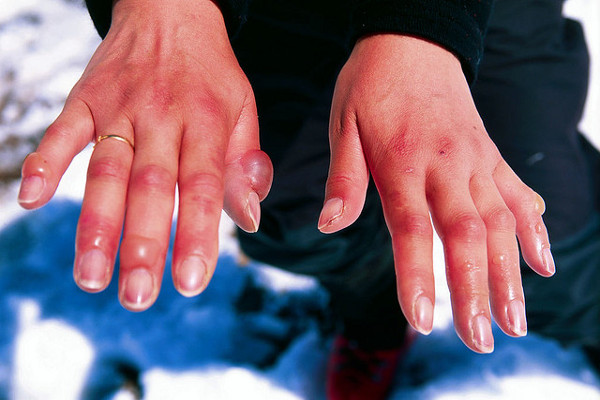Frostbite Prevention

The past couple of weeks have been extremely cold throughout most of the United States. Many areas are setting records for low tempuratures and wind chill factors from Georgia to Michigan. This time of year many of us have to work outside either regualarly or periodically and protection from frostbite must remain top of your list for safety concerns
Cause
Frostbite is caused by exposure to very cold temperatures. The elderly and the young are particularly susceptible to frostbite.
Other risk factors include:
- Not dressing properly for the weather, staying out in the cold too long, or getting wet while you are exposed to the cold.
- Having a medical condition that affects your circulation, such as diabetes and atherosclerosis.
- Having had a previous injury that was caused by the cold.
- Taking certain drugs, including alcohol and nicotine, or medications such as beta-blockers—which decrease the flow of blood to the skin.
Symptoms
It is important to recognize the signs of frostbite so that you can seek medical help, if needed. Symptoms include:
- The affected area becomes numb.
- The skin may feel frozen, but deeper tissues are soft (superficial frostbite) or the entire affected area feels solid, hard and frozen (deep frostbite).
- The skin may appear waxy, white, or grayish.
Treatment
Seek medical care promptly if you suspect that you or someone you are with has frostbite. In some cases, frostbite can have very serious outcomes. The lack of blood flow and oxygen to the skin can cause the flesh to die, leading to permanent tissue damage. This may result in the need for amputation of the affected extremities. In some cases, an individual with frostbite will also develop hypothermia, another serious cold-weather condition that requires emergency medical assistance.
If medical care is not immediately available, follow these "do's and don'ts" for treating frostbite:
The "DO's"
- DO bring the person indoors into a warm room as soon as possible.
- DO call for medical assistance immediately. While you are waiting for assistance to arrive, you can serve the person broth, tea, or another warm drink.
- DO rest the injured areas.
- DO remove any wet or restrictive clothing.
- DO gently rewarm the frostbitten area. To do this, immerse the affected area in warm (not hot) water for at least 30 to 45 minutes, or until the area feels warm and sensation returns. During warming, be aware that the individual may complain of severe pain and the injured area may swell and change color.
- DO prevent infection by leaving any blisters intact. Cover them loosely with a sterile or clean cloth.
The "DON'Ts"
- DON'T do anything that will further injure the tissue.
- DON'T rub or massage the frostbitten area with your hands, with snow, or with anything else.
- DON'T walk on frostbitten feet. Have the patient sit still with feet elevated slightly.
- DON'T warm the affected area if there is any chance that it will be exposed to the cold again. Skin that is warmed and then refrozen can suffer additional tissue damage.
- DON'T use dry heat, such as from a heating pad, fire, blow dryer, or radiator, to warm the area. The skin may be numb and can burn easily.
Prevention
It is easier to prevent frostbite than it is to treat it. If you must go out in the bitter cold, be prepared.
Observing the five commonsense precautions below will help ensure that your winter outings end safely:
- Dress appropriately. light, loose, layered clothing provides both ventilation and insulation. Top off your outfit with a water-repellent (not waterproof) fabric.
- Protect your head, hands, and feet. Substantial heat loss occurs through the scalp, so a warm hat is vital. Mittens are warmer than gloves, and two pair of socks (wool over lightweight cotton) will help keep your feet warm.
- Do not drink alcohol or smoke before going out into the cold. Alcohol, caffeine, and nicotine leave the skin more prone to thermal injury.
- If you get wet, get inside! Remove wet clothing as quickly as possible.
- Check yourself every half hour or so for signs of frostbite. If your fingers, toes, nose, ears or any other body parts feel numb, go inside immediately.
